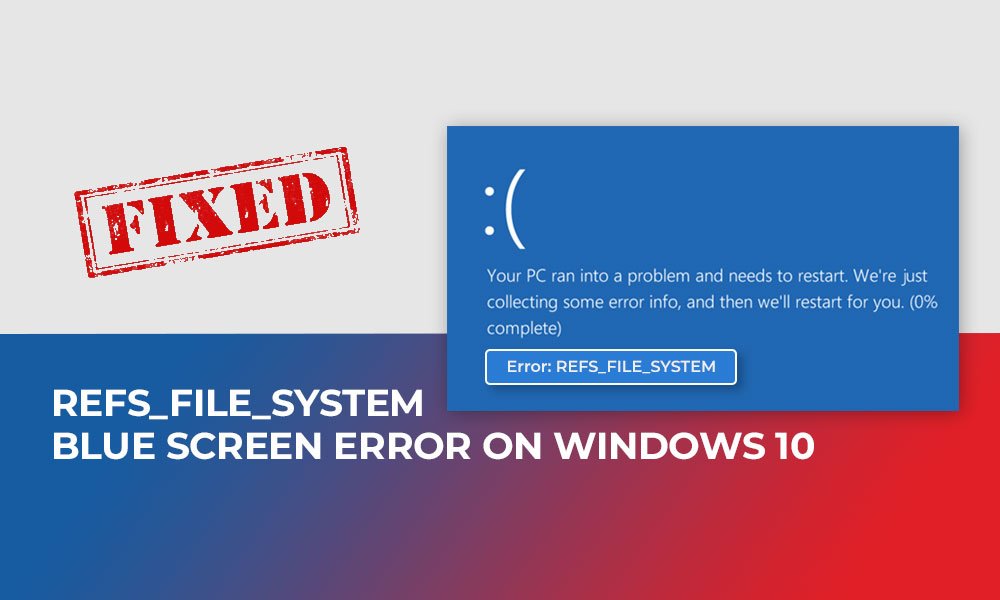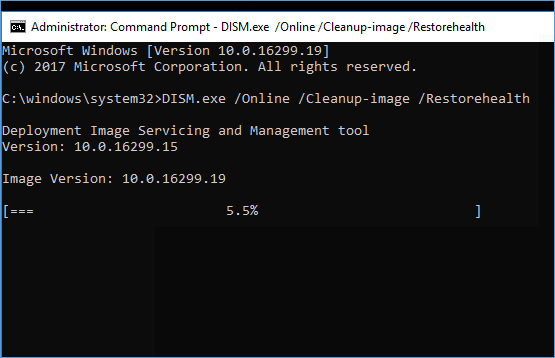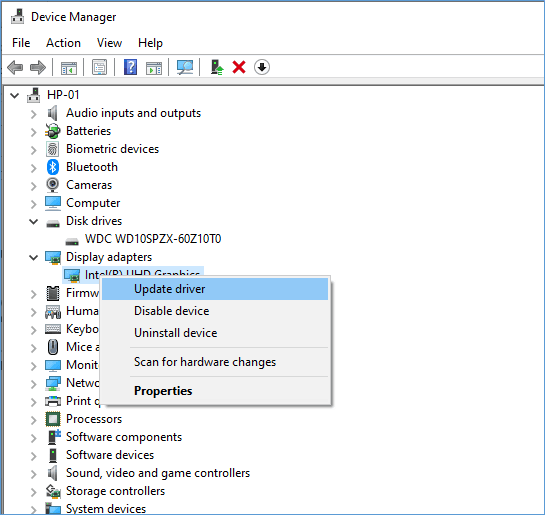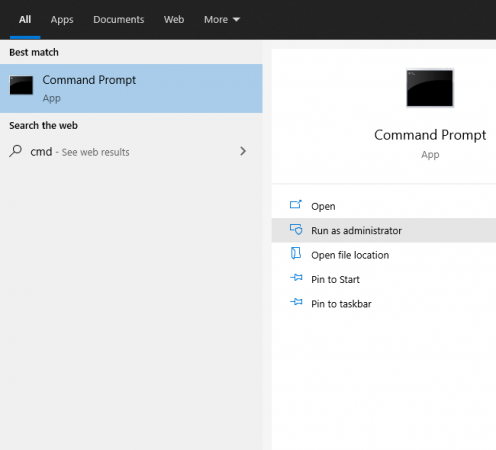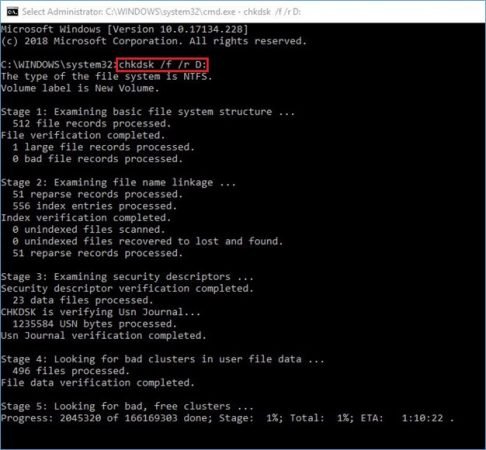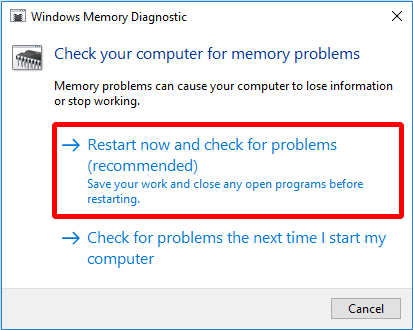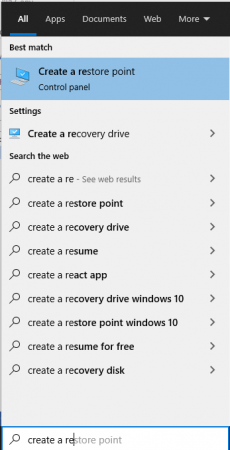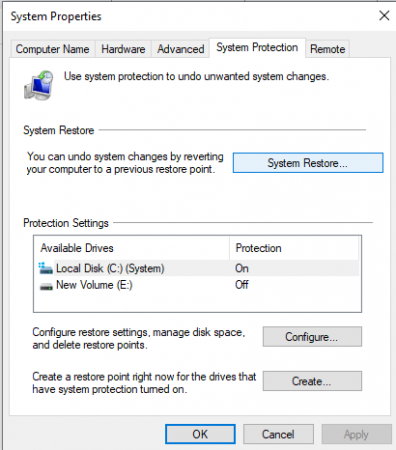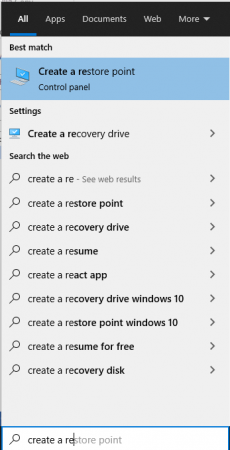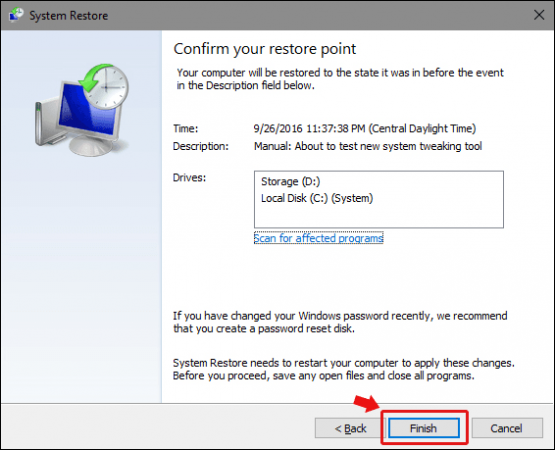Fix: REFS_FILE_SYSTEM Blue Screen error on Windows 10
The REFS_FILE_SYSTEM error on Windows indicates an issue with the file system. This blue screen error has a bug check value of 0x00000149. This file system error may occur due to multiple reasons, such as corrupted hard drives, conflicting third-party applications on the system, missing or corrupted system files, etc. Irrespective of the causes, this error puts your system and its data at great risk as it could lead your system to a complete crash.
We’ve provided some effective methods to help you fix the REFS FILE SYSTEM error in this post. However, before that, let’s explore all the possible reasons that may lead to this error.
What Causes REFS File System Windows 10 Error?
This blue screen error is most likely to occur due to the following reasons:
-
Damaged, corrupted, or missing system files
-
Corrupt device drivers
-
Corrupted hard drivers
-
Memory issues
-
Problematic third-party application
How to Fix REFS File System Error?
We’ve provided some DIY methods to help you troubleshoot this BSOD error.
-
Method 1: Run DISM and SFC Scan
If there are damaged, corrupted, missing system files or permanently deleted files, a REFS file system BSOD error may occur. You may try running DISM and then SFC scan to fix the problem.
You may use Deployment Image Servicing and Management (DISM) command to fix corrupt system images.
Run DISM before SFC (System File Checker) scan if you have Windows 10 or Windows 8/8.1 installed on your system.
To do so, follow the given steps:
-
Run Command Prompt as administrator and type DISM.exe /Online /Cleanup-image /Restorehealth. Press Enter.
-
Wait till it shows the results.
-
Next, type SFC/scannow and hit Enter.
- Wait for a while. Now, reboot your system to check if the problem is solved
-
Method 2: Update Device Drivers
You may encounter blue screen errors on Windows 10 because of outdated or corrupt device drivers may also.
To get rid of the error, update your device drivers with the below-given steps:
-
Press Windows + X and choose to open Device Manager.
-
Next, locate the device category and expand it.
- Choose the driver you want to update, right-click on it, and further click Update driver.
-
On the next prompt, click Search automatically for drivers.
-
Windows will look for the latest driver available. Once available, download the latest driver. Now, reboot your system to check if the error is fixed.
-
Method 3: Run CHKDSK Command
Corrupted hard drives and hard drives with bad sectors are generally the most common reasons for a blue screen of death error. Running the CHKDSK command helps you fix a corrupted or faulty hard drive.
Here are the steps:
-
Navigate to Windows Search Box > type cmd > run Command Prompt as administrator.
-
Click ‘Yes’ to allow permission to run Command Prompt with admin access.
-
Next, in the elevated Command Prompt window, type chkdsk /f /r D: and hit Enter. (Replace the letter D: with your hard drive letter.)
- Now, wait for a while. Let the process complete and close the window and reboot your PC
Note: While fixing hard drive errors, the CHKDSK command with f and r attributes marks the bad sectors on the hard drive and prevents Windows from reading and storing data. Due to this, any important data on the bad sectors of the hard drive will be lost permanently.
|
You can use powerful data recovery software, such as Stellar Data Recovery Professional, to recover the lost data. It is a DIY tool that can recover data in deleting, formatting, corruption, etc. In addition, it lets users create bootable media recovery to restore data from non-bootable or crashed Windows PCs. |
-
Method 4: Run Windows Memory Diagnostic Tool
Damaged or faulty RAM may also be a reason for the REFS File System Windows 10 error. You can test RAM using the Windows Memory Diagnostic tool. Follow the given steps:
- In Windows Search Box, type Memory Diagnostic to run Windows Memory Diagnostic tool
-
On the next prompt, select Restart now and check for problems (recommended).
- The system will restart, and a test will initiate
-
Once the test is done, you will see the results.
-
If there are any further instructions given on the screen, follow them. Once done, close the test window.
-
Finally, reboot your system.
-
Method 5: Perform System Restore
Lastly, you can try performing a system restore to fix the REFS File System error on Windows 10. However, it will bring your PC to default settings. This means all the changes related to registry editor, device manager, system files, applications, drivers, etc., will be lost, eventually causing data loss. Take a backup of your system data (if possible) before performing this method. However, you can recover data using a robust data recovery software.
Follow the given steps to perform system restore:
-
In Windows Search Box, type Create a restore point to open System Properties.
-
Next, navigate to the System Protection tab and click System Restore.
-
On the next prompt, click Next to proceed.
-
Now, select a restore point and click Scan for affected programs.
-
The process will scan for the program that will be affected. After this, click Close > Finish.
-
Finally, reboot your PC and see if the error is fixed.
Conclusion
The REFS File System error is a blue screen of death error that may cause multiple problems for your system. The system may get stuck at a booting loop, crash randomly, or start malfunctioning. The error may occur under any circumstance and without showing any warning. The reasons behind it could be several as discussed above. With the help of the troubleshooting methods we’ve shared in this post, you can fix this error quite easily. However, while performing some procedures such as running the CHKDSK command or performing system restore, take precautions as these processes may lead to permanent data loss.

